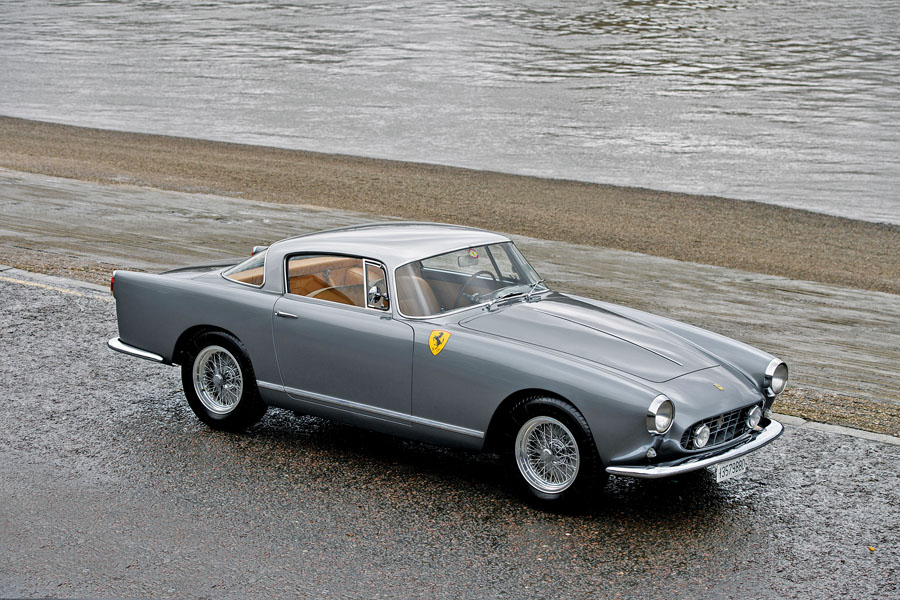Chassis Number: 0639GT
Originally finished in Grigio with Rosso interior, this Boano coupe was delivered to Milanese publisher Giorgio Mondadori during the spring of 1957. It was exported from Italy to England in the late 1960s, and by the following decade was exhibited in Jim Baxter’s Lark Lane Motor Museum in Liverpool, finished in red with a tan interior.
Jean-Roger Bossut, of France and Belgium, owned the car. In 2007, the Ferrari was seen during the Ferrari 60 Relay event in Reims and Epernay, France. Subsequently, it was Ferrari Classiche-certified, and afterwards, in 2012, cosmetically restored in a pale silver-blue metallic, Argento Auteuil Metalizzato with a gray roof and tan interior. Reportedly, it also received a rebuild of its original engine by noted marque specialist Terry Hoyle in December of 2017.
Beautifully presented and lovingly finished, with Ferrari Classiche certification, this gorgeous Ferrari coupe represents one of the most elegant designs on the 250 GT chassis.

